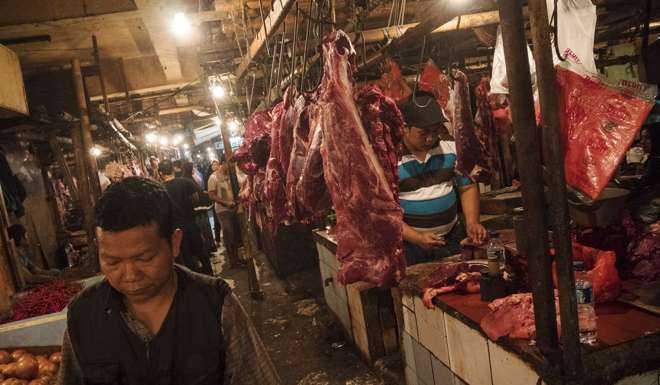
New | A matter of taste: Indian buffalo meat threatening to replace Australian cattle on Indonesian plates
Indian meat also making inroads in Vietnam and Malaysia, threatening Australian markets there as well
Indonesians’ growing appetite for red meat needed to make rendang curries and to flavour noodle soups is putting the world’s biggest seaborne cattle trade at risk.
For the first time, Indian frozen buffalo meat is legally available in the world’s fourth-most populous nation. The sales, which started last month, are already causing anxiety on the sprawling Australian ranches that supply Indonesia with more than half a million live cattle a year.
The threat to Australia’s market share “is very real and we’d be foolish to think otherwise,” Tracey Hayes, chief executive of the Northern Territory Cattlemen’s Association, said from Darwin, where the bulk of Australia’s live cattle exports are shipped to Indonesia. Indian buffalo “is a much cheaper product,” she said.
Australia relies on Indonesia to buy more than half its live cattle exports -- earning A$549 million (US$417 million) from the live trade last year. Australia has sought to repair its reputation as a reliable supplier after abruptly banning live shipments in 2011 due to allegations of cruelty in Indonesian abattoirs.

Indian buffalo meat sells for as little as the state-food agency set price of 65,000 rupiah ($5) a kilogram in so-called wet markets in Jakarta, compared with about 115,000 rupiah a kilogram for beef from Australia in more upscale farmers’ markets.
It’s becoming increasingly popular in Asia, and India is now a major supplier to Vietnam and Malaysia -- two countries that are also significant buyers of Australian live cattle.
The live cattle trade has at times been a flash point in Australia-Indonesia relations, which have also been strained by a spying scandal and the execution of convicted Australian drug smugglers. President Joko Widodo visits Australia in November, with a potential free-trade deal up for negotiation.

Australian Trade Minister Steven Ciobo said in an August interview that he was aiming to complete a free-trade agreement with Indonesia within 18 months.
Faced with meat shortages due to greater demand from a burgeoning middle class, Indonesia lifted a ban on Indian buffalo meat this year, with 10,000 tonnes arriving til the end of September. Selling at as much as 40 per cent less than Australian produce, the meat is finding a ready market in the nation where the World Bank estimates about 100 million people live near the poverty line income of 4 million rupiah a year.
“It’s cheaper than beef and tastier,” said Elis, who was weekend shopping at an upscale market west of Jakarta for her family of five. “I can make stew or soup from the buffalo meat.”
Bonang Rahmat, who works for wholesaler PT Anzindo Gratia International, said poorer customers certainly prefer buffalo.
“In Bumi Serpong Damai market, we sell about 70 kilograms of buffalo meat a day and about 200 kilograms of beef when we open during the weekend,” he said in an interview. “The buyers are mostly catering companies and beef soup vendors.”

Australia has traditionally dominated the red meat market in Indonesia, accounting for 80 per cent of the nation’s imports in 2015, according to Australia’s Meat and Livestock Association. It’s virtually the only provider of imported live cattle for the wet markets, where most Indonesians shop for fresh produce. There were 618,323 head of cattle shipped from Australia to Indonesia in 2015, according to the MLA, making it the largest seaborne trade.
The US is the world’s biggest cattle importer according to the US Department of Agriculture, with imports of almost 2 million head in 2015, though its imports are mostly trucked across from Mexico and Canada.
Indonesian suppliers may have been encouraged to look elsewhere for red meat due to record prices for cattle in Australia, said Belinda Moore, a senior analyst at Morgans Financial Ltd. in Brisbane.
“As the herd rebuilds over the next couple of years we would expect prices to come off these record levels,” said Moore.
India buffalo meat exports have surged in recent years amid a growing dairy industry in the nation. Buffaloes aren’t sacred in the Hindu religion and their milk has more fat than cow milk. Most states in India ban cattle slaughter and exports of cow meat.
Bonang says wealthier customers in Indonesia are sticking with beef -- for now.
“Middle to upper household customers who know good quality beef like Australian beef, so they prefer to buy beef over buffalo meat,” Bonang said.

